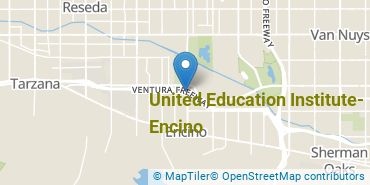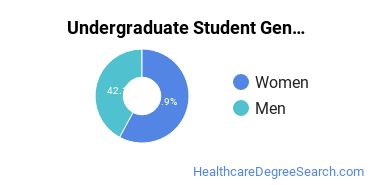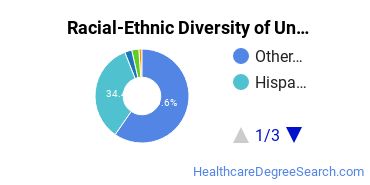United Education Institute-Encino Healthcare Programs
United Education Institute-Encino is a private for-profit institution located in Reseda, California. The location of the school is great for students who enjoy the amenities of city life.
Featured schools near , edit
Where Is United Education Institute-Encino?

Contact details for United Education Institute-Encino are given below.
| Contact Details | |
|---|---|
| Address: | 18040 Sherman Way, Reseda, CA 91335-4631 |
| Phone: | 818-380-5900 |
| Website: | www.uei.edu |
How Do I Get Into United Education Institute-Encino?
You can apply to United Education Institute-Encino online at: https://enroll.uei.edu/
Can I Afford United Education Institute-Encino?
Student Loan Debt
It's not uncommon for college students to take out loans to pay for school. In fact, almost 66% of students nationwide depend at least partially on loans. At United Education Institute-Encino, approximately 97% of students took out student loans averaging $10,352 a year. That adds up to $41,408 over four years for those students.
United Education Institute-Encino Undergraduate Student Diversity
Gender Diversity
Of the 767 full-time undergraduates at United Education Institute-Encino, 38% are male and 62% are female.

Racial-Ethnic Diversity
The racial-ethnic breakdown of United Education Institute-Encino students is as follows.

| Race/Ethnicity | Number of Grads |
|---|---|
| Asian | 9 |
| Black or African American | 19 |
| Hispanic or Latino | 211 |
| White | 23 |
| International Students | 0 |
| Other Races/Ethnicities | 505 |
United Education Institute-Encino Healthcare Concentrations
The table below shows the number of awards for each concentration.
| Major | Undergraduate Certificate | TOTAL |
|---|---|---|
| Medical/Clinical Assistant | 225 | 225 |
| Dental Assisting/Assistant | 86 | 86 |
| Medical Insurance Coding Specialist/Coder | 40 | 40 |
| Pharmacy Technician/Assistant | 32 | 32 |
| TOTAL | 383 | 383 |
References
*The racial-ethnic minorities count is calculated by taking the total number of students and subtracting white students, international students, and students whose race/ethnicity was unknown. This number is then divided by the total number of students at the school to obtain the racial-ethnic minorities percentage.
More about our data sources and methodologies.
